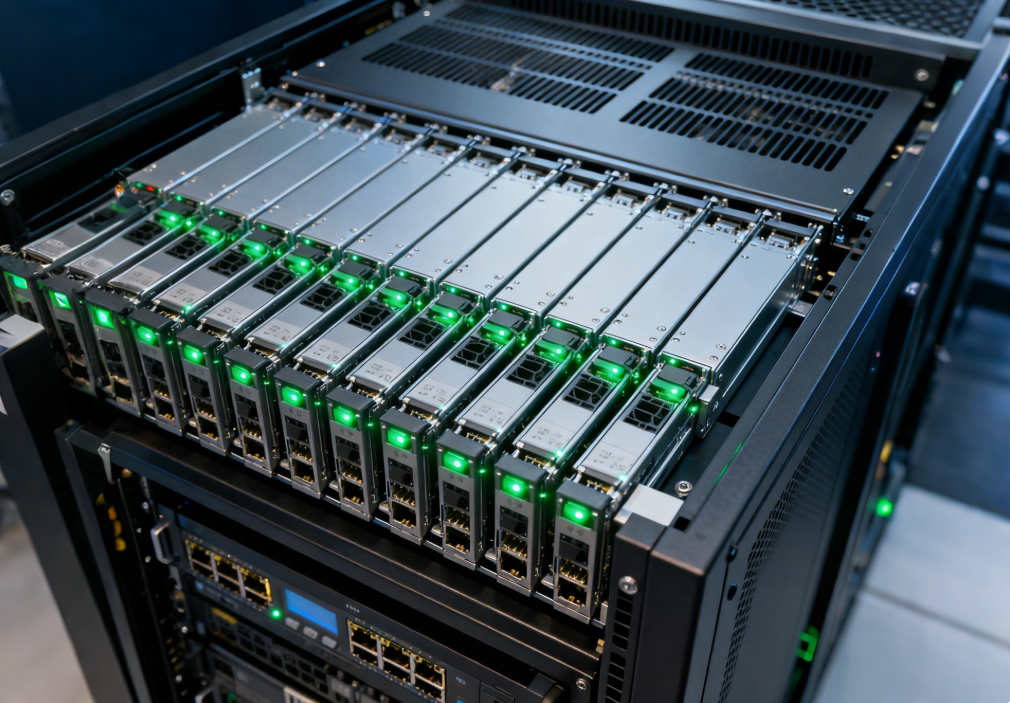From Peak to Transformation: What the Rise and Fall of Blade Servers Reveals About Technology
In today's rapidly evolving IT landscape, few products have made such a revolutionary entrance as blade servers—profoundly reshaping data centers before quietly transforming amid technological waves. Reflecting on the rise and fall of blade servers isn't merely reminiscing about a bygone era; it serves as a vital lesson for all technology decision-makers on the “technology lifecycle” and “architectural adaptability.”
The Peak: Why Did Blade Servers Once “Rule” Data Centers?
In the early 21st century, as enterprise digitalization deepened, rack servers within data centers became bloated and unwieldy. Tangled cables, soaring power consumption, and complex management became nightmares for IT administrators. Blade servers emerged at this critical juncture, addressing the era's core pain points with their disruptive design:
High-Density Computing: Integrating compute, networking, and storage modules into a single chassis dramatically reduced physical space requirements, doubling a rack's computational capacity.
Simplified Management: Through unified chassis management modules, administrators could centrally configure, monitor, and deploy dozens of blades, revolutionizing operations by “turning complexity into simplicity.”
Integration and Energy Efficiency: Shared power and cooling systems reduced overall energy consumption and minimized cabling, creating cleaner, more efficient data centers.
Blade systems like HP's BladeSystem (now HPE) and IBM's BladeCenter quickly became standard equipment in mission-critical sectors like large enterprises, finance, and telecommunications, representing the most advanced and “elegant” data center solutions of their era.

The Turning Point: Hidden Concerns and Challenges Beneath the Wave
Yet technological progress marches relentlessly forward. Just as blade servers reached their zenith, new trends began to emerge, ultimately undermining their dominance:
The Rise of Cloud Computing: Public cloud providers like AWS, Azure, and Alibaba Cloud championed a radically different model—resource pooling and on-demand allocation. Enterprises no longer needed to make massive upfront investments in expensive blade enclosures and blades, instead opting for more flexible, cost-effective cloud services.
The Popularization of Scale-Out Architecture: Internet giants like Google and Facebook pioneered the “scale-out” architecture—using clusters of numerous inexpensive, standardized x86 servers—to handle massive data volumes and unstructured workloads. This approach directly contradicted the blade server philosophy of “vertical integration and monolithic power.”
Vendor Lock-in and Cost Issues: Blade servers typically exhibit high vendor lock-in characteristics. Once a specific blade chassis brand is selected, subsequent blades, network modules, and storage modules must all be from the same brand, leading to high procurement costs and limited upgrade flexibility.
Emerging Competitive Formats: The advent of hyper-converged infrastructure (HCI) deeply integrates compute, storage, and networking within standard servers. By leveraging software-defined approaches, HCI achieves higher levels of agility, becoming the new favorite for modern data centers.
Insights: What Does the Rise and Fall of Blade Servers Teach Us?
Blade servers have not “disappeared,” but rather found new roles within the evolving technological landscape. They continue to play vital roles in specific scenarios such as high-performance computing and virtual desktop infrastructure. However, their transition from ‘mainstream’ to “specialized” offers valuable technical insights:
There is no eternal mainstream; only solutions for their time.
Every technology has a lifecycle. Its value hinges on resolving the most pressing contradictions of its era. Blade servers addressed the tension between “physical consolidation and management efficiency,” but when the focus shifted to “elasticity, cost, and agility,” they inevitably ceded ground. Technology decision-makers must cultivate foresight to avoid path dependency on any single solution.
Openness and standardization form the bedrock of enduring viability.
Vendor lock-in with blade servers was a key factor in their decline. In contrast, today's successful technologies—such as the x86 architecture and Kubernetes container orchestration—owe much of their success to open ecosystems and widespread standards. Prioritizing open standards and interoperability during technology selection preserves greater flexibility for future choices.
The shift from “asset ownership” to “service consumption” is an inevitable trend.
Blade servers epitomized the “heavy asset” model. The triumph of cloud computing fundamentally represents the victory of the “service consumption” model over the “asset ownership” model. The core philosophy of enterprise IT development should shift from “how to build better” to “how to use smarter,” fully leveraging the advantages of public, private, and hybrid clouds.
Learning from history, looking toward the future
The story of blade servers is a classic case study of innovation, adaptation, and transformation. It teaches us that a technology's value lies not in its inherent “coolness,” but in its ability to create business value. As we confront new waves like AI servers, edge computing, and quantum computing, we must remain clear-headed: embrace change, focus on architecture rather than individual products, and persist in building flexible, future-oriented technological foundations with an open mindset. This is the most valuable legacy the rise and fall of blade servers leaves us.



